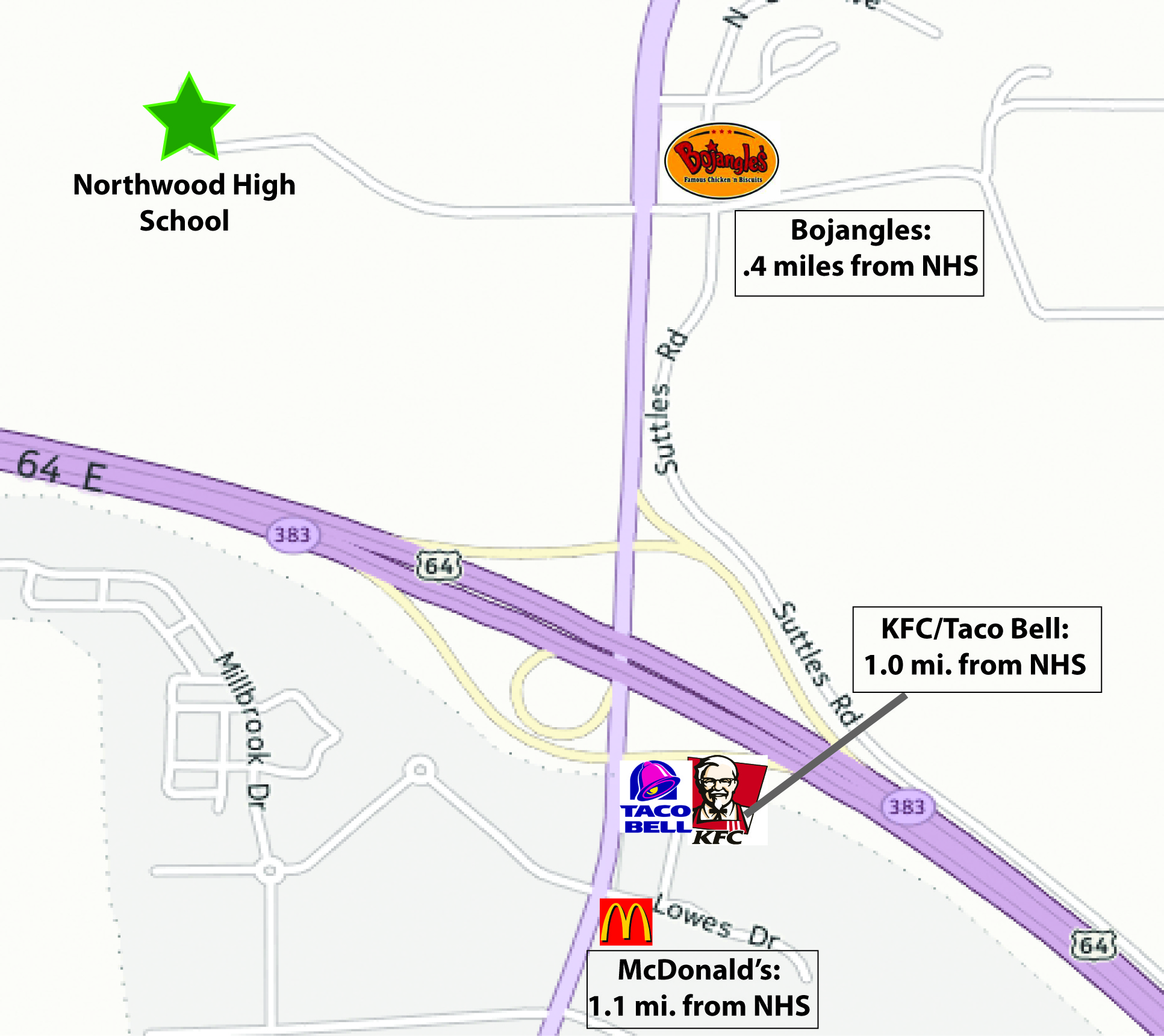Many students are familiar with the fast food restaurants close to Northwood such as McDonald’s, Taco Bell, KFC and Subway. The new Bojangles opening up across the street adds yet another fast food restaurant for students to indulge in.
With so many food choices to choose from so close to the school, many students eat at these restaurants at least once a day. According to the USDA, nearly 30 percent of youth in America consume fast food at least once on a typical day. Unhealthy eating habits can contribute to health problems later in life, and on top of this, around 9 million children are considered obese nationwide.
With obesity stats in America somewhat overwhelming, this is not stopping some students from eating unhealthily.
Senior Daniel Clark says he eats fast food around once or twice a day.
“It’s just easier to swing by and get something to eat,” Clark said.
Although he eats fast food often, Clark is aware of the potential health risks.
“I don’t always get the biggest thing, and sometimes I’ll try to get healthier things like a salad or something,” Clark said.
According to research done by the University of California at Berkley, having a fast food restaurant within 530 feet of a high school resulted in a 5.2 percent increase in the occurrence of obesity in students.
Nutrition expert and assistant research professor at UNC-Chapel Hill, Dr. Archana Lamichhane, says that the research findings on concentration of quick service restaurants near schools and student nutrition are still rather inconclusive, only because of the inconsistencies between schools and fast food locations.
“The findings look at the access to or the availability to [unhealthy food] around your residence, your school or your work, and how that impacts your diet and in the long run, your health problems,” Lamichhane said.
Although research results are still debatable, Lamichhane says that the unhealthy options could affect nutrition in students.
“If the students have access to those resources nearby their school, then without any doubt, their diet will be poor as compared to the schools who do not have those types of resources in a closer proximity,” Lamichhane said.
Northwood has a closed lunch policy, which means that students are not allowed to leave campus for lunch. Lamichhane thinks that this is a safer option as it limits access to unwholesome foods.
“I would be more worried if the school had allowed students to go out and eat. I think that the impact could have been more, versus a school with a closed lunch policy which doesn’t allow students to go out during lunch time,” Lamichhane said. “So that reduces in some amount the exposure to these non-nutritious foods, but it does not mean that [students] don’t have access to it either before school or after school.”
Even with the closed lunch policy and students being restricted from bringing in outside food, it would be difficult for schools to keep these foods out of the hands of the students.
“The opening of these restaurants nearby, I think, may tempt them to eat there more often, and even bring food to the school cafeteria and eat,” Lamichhane said.
Despite the fact that certain trends appear in data, there is no conclusive evidence on the subject.
“As I said, the findings are mixed, and you can’t definitely say that the opening of one restaurant will degrade the health condition of students,” Lamichhane said.
— Tyler White

